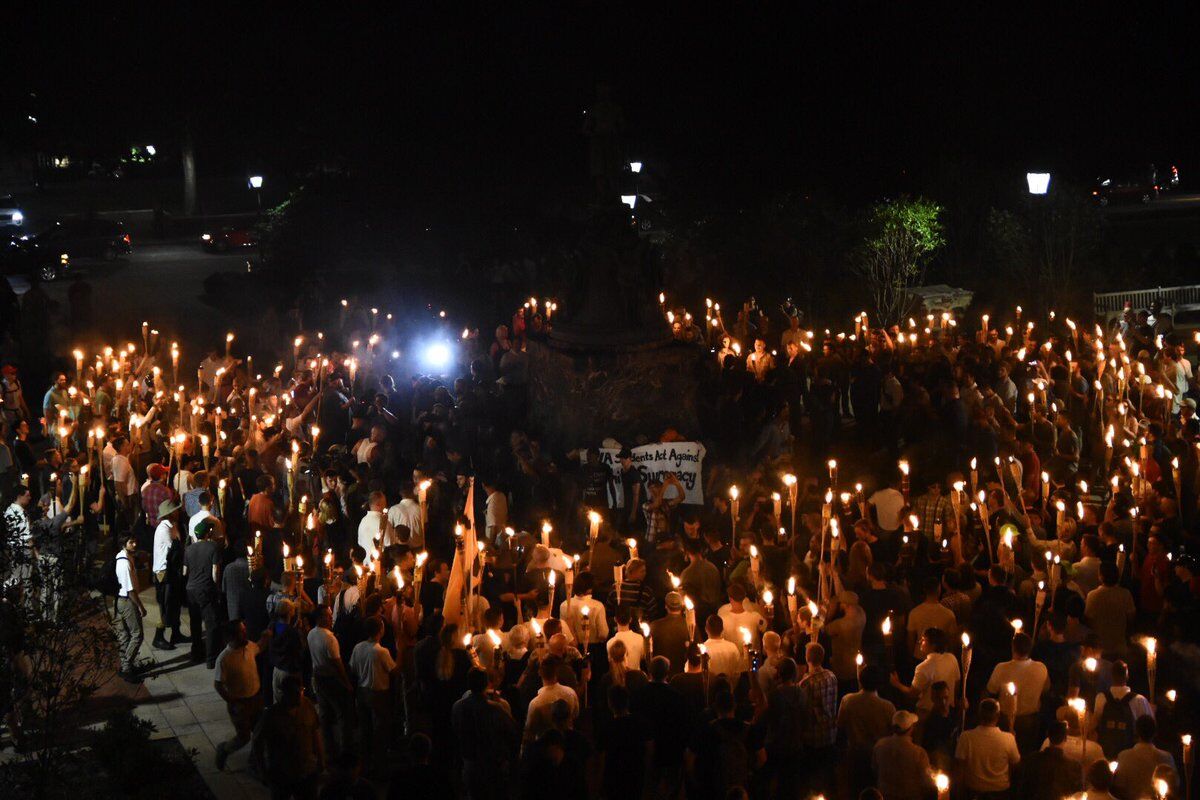This film wasn’t supposed to be made.
On Sept. 15, I flew to Richmond to attend the first Pride festival since the violence in Charlottesville just weeks earlier. I had previously spoken with members of the LGBTQ community there for a story following the Aug. 12 attack, hoping to learn about how queer and trans people were responding the attack. But the tragedy was too new and the wounds too raw to vocalize what a community-wide response to white supremacy might look like. Most of the people I spoke with were just coming to terms with what happened themselves.
I went to Charlottesville Pride thinking that I would talk to residents about the August incident, in which a car plowed through a crowd of counter-protesters, and how the town has worked to heal since. I figured I would jot down their thoughts on a notepad and fly back home.
But when I finally arrived in Charlottesville that Saturday morning, I realized that there was a potential to tell these stories I wasn’t even aware I had. My suitcase included a Nikon DSLR that I grabbed from work to take pictures of the Pride festival: drag queens belting their hearts out to Whitney Houston and preteens hanging out on the grassy knoll. Here was my idea: Why not record Charlottesville’s LGBTQ community giving voice to their own stories? The power of documentary is that it puts a face to issues. It gives the audience a chance to feel like they know the subject, and in so doing, encourages empathy and understanding.
In short, cinema has the ability to bring the world closer together, which has never been more important than during a political moment marked by hatred and division. I had to take advantage of that opportunity.
I was a one-man crew. I didn’t have a lighting kit, and my tripod was an office chair I borrowed from the community center in Charlottesville, who allowed us to film in the building. I didn’t have a lavalier to mic people up, so I had to have interviewees record audio on my iPhone. In some segments, I’m pointing my cell phone at subjects’ faces just off camera. Harriet and Hannah, the teenage friends who share a laugh in the film’s closing moments, sat very close together so they could wedge the phone between their thighs.
None of us had any idea how this was going to turn out. I had never shot video on a DSLR. The camera equipment we used in film school was massive, the kind that requires an entourage of graduate students to haul around. I had seven hours to film before the busy community center, where children would frequently stomp through as we were rolling, shut down for the day. There weren’t many chances for a do-over.
If any of this footage was even remotely usable, I told myself that I would consider it a god-ordained miracle. The result surpassed even my wildest expectations.
But what truly impressed me that day was the resilience of Charlottesville’s community, the strength than LGBTQ people and their allies have shown in moving forward from the tragedy. There are so many stories of courage and compassion that it was impossible to include all of them.
Cyndi, who does not appear in the video, used to go on vacation to Charlottesville during the summer when she was very young. Now in her 60s, she remembers being “shuffled to the back” at the local Paramount Theater at a time when forced segregation was rampant in Virginia. Cyndi and her family sat in the balcony. The violence that erupted in August, which resulted in the death of 32-year-old activist Heather Heyer, was a reminder of the discrimination that people of color have long experienced.
Erica, who wore a bright rainbow t-shirt the day of Pride, recently moved to Charlottesville to be with her girlfriend. Since Aug. 12, she has been painting rocks with messages of positive affirmation in the city and leaving them around for people to find. Called the Guerilla Love Initiative, Erica hopes that the small acts of kindness help Charlottesville find solace in the midst of decades-old struggle.
“It’s a symbol of hope, not just love,” she told me. “We’re here, we’re not going anywhere, and no one is going to run us out of town.”
Americans are living through an era of constant trauma, where journalists, media publications, and filmmakers document acts of everyday terror and leave. But these stories are a reminder of what it really means to have Pride: to create hope instead of fear, to celebrate community, and to dream of a better, more inclusive future. The people of Charlottesville are ready for it.
Watch the video, courtesy of INTO.
Don't forget to share:
Help make sure LGBTQ+ stories are being told...
We can't rely on mainstream media to tell our stories. That's why we don't lock our articles behind a paywall. Will you support our mission with a contribution today?
Cancel anytime · Proudly LGBTQ+ owned and operated
Read More in Culture
The Latest on INTO
Subscribe to get a twice-weekly dose of queer news, updates, and insights from the INTO team.
in Your Inbox













